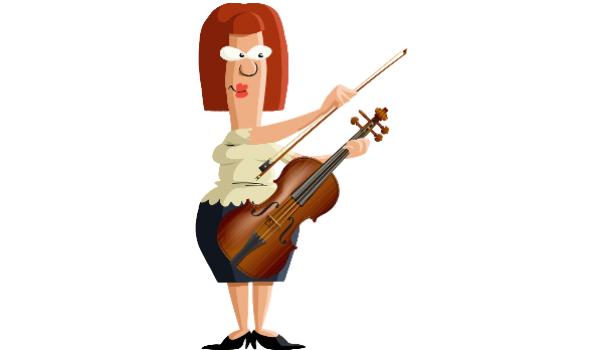View all of our courses and services
on findcourses.com
Sign up for free mini-courses
at our eLearning school
View all of our courses and services
on findcourses.com
Sign up for free mini-courses
at our eLearning school

One day a colleague and I were talking with a group of executives with a multi-national corporation. They were exploring how we might help them expand the scope of innovation beyond their R&D department to more areas of the organization.
They knew they needed to learn “blue ocean” thinking (creating their own space with no competition) and “disruptive innovation” (changing the game altogether). However, it was abundantly clear they wanted to avoid the uncertainty and chaos that typically accompanies innovation and keeps it contained in specific departments like R&D.
I have a favorite saying when I’m trying to do something while facing the uncertainty of how it will turn out: “It’s like learning to play the violin in public!” Usually, it sounds “pretty squeaky” for a while and then slowly, but surely coherent music will start to come.
When it comes to playing the “innovation violin” in public, there’s bad news and good news. The bad news is that uncertainty is inevitable because being innovative is about creating the future, whether you are striving for incremental or breakthrough change. Anytime we are creating something new or changing what already exists, there are elements of uncertainty. Sometimes the uncertainty is large and sometimes it is sporadic throughout the process.
The good news is that we can learn both the art and the discipline of innovation to accelerate our innovation learning curve and enjoy the “squeaky” moments.
The art of innovation is what gives meaning and motivation to what we create or change, and how we come together to collaborate and make a positive difference. The end result of practicing the art of innovation is the commitment, courage and character it takes to generate meaningful solutions and bring them to fruition.
The discipline of innovation emphasizes processes and principles that anyone can learn and practice, which builds substantive competencies for being innovative in every day work. The end result of discipline is the freedom to contribute our best at work.
When we can lighten up and embrace the uncertainty inherent in the innovation process, while practicing the discipline of innovation, experience has shown that it not only strengthens our ability to innovate well, but also helps us to enjoy the journey.
So let's all relax and accept the fact that each time we innovate, it's like learning to play the violin in public!
P. S. If you're a nostalgia fan, you'll enjoy this YouTube video clip of Jack Benny, a popular 1960s comedian, doing his "squeaky" violin routine...